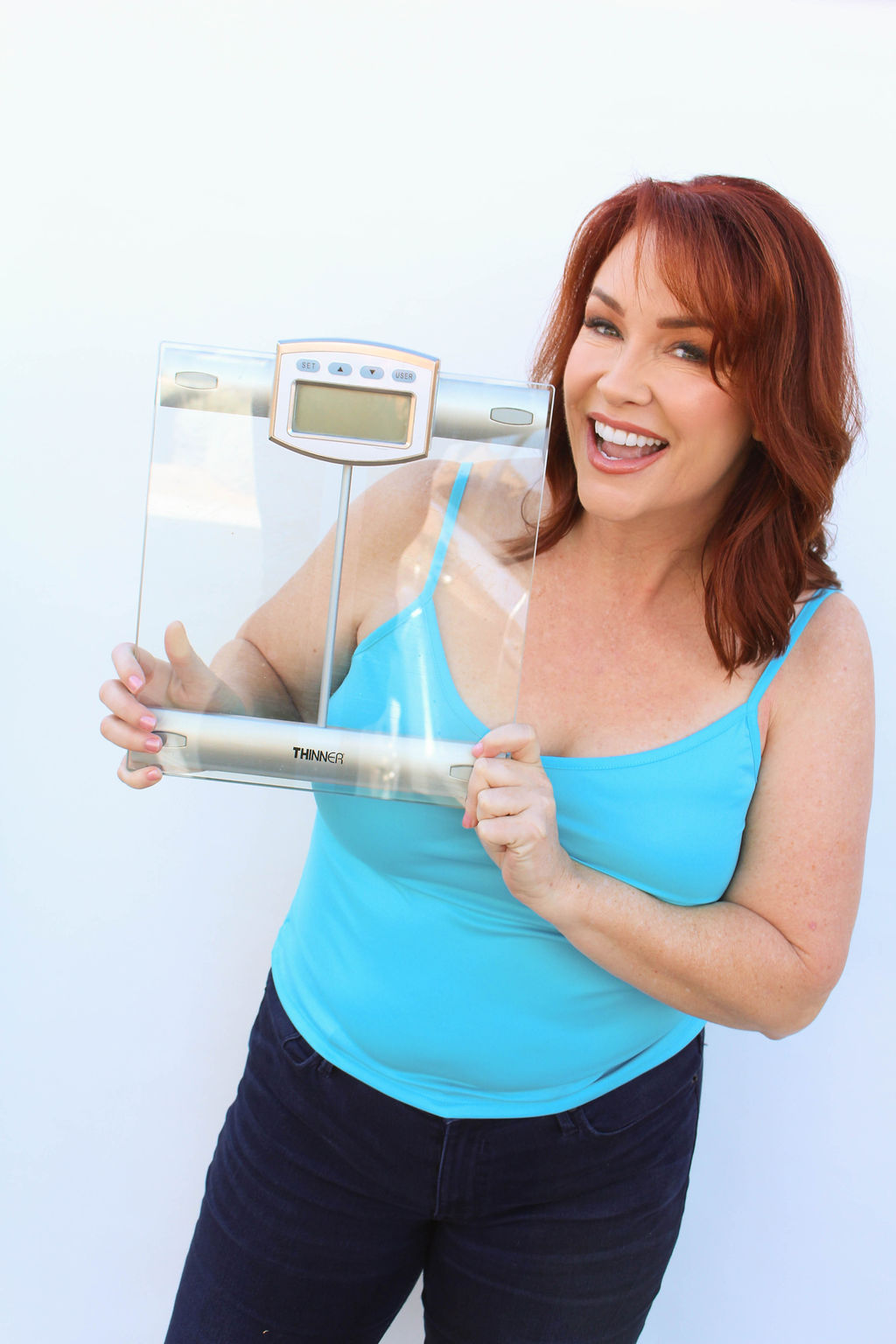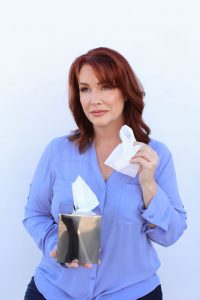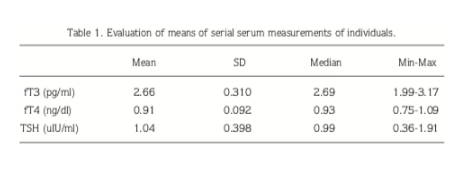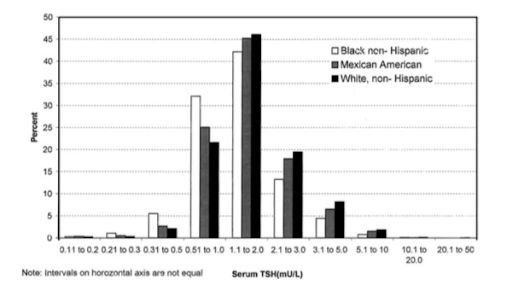I want to take some time today to discuss your best thyroid levels. Labs have a normal range, and there is also an optimal range that you are likely to hear about. Let me tell you a bit more about ideal TSH levels for your specific condition.
- Have any questions?
- 480-767-9018
- support@in-goodhealth.com

Can Thyroid Cancer Be Treated?
June 30, 2024
What Is Your Height-To-Waist Ratio and What Does It Mean?
July 6, 2024
Can Thyroid Cancer Be Treated?
June 30, 2024
What Is Your Height-To-Waist Ratio and What Does It Mean?
July 6, 2024Home > Hormone Reset > How to Find the Best Thyroid Levels for Your Condition
How to Find the Best Thyroid Levels for Your Condition

Our Thyroid Calculator
The first thing I want to tell you about is an amazing calculator that we have created Click Here. Now, you can plug in your specific information and it can give you everything that you need to know about your health.
Please enjoy it, it is free for your use. You are also welcome to share it with any friends who are trying to make sense of their thyroid labs.
Normal ranges are helpful but they are not the same as optimal. There is more to it than that since optimal ranges are not the same for all people.
Today you can take it a step further and find your own optimal ranges.
There is nothing else like it that I’ve seen online and I think it will be really helpful. You can plug in as many of your thyroid results as you have and it will instantly let you know what your best thyroid levels. This is based on your age, gender, and health status.
Access your best thyroid level and Optimal Range Calculator Here.
Understanding Normal Ranges
Lab results that you receive will typically contain normal ranges – both the highs and the lows. The drawback to this is that these normal ranges are averages for populations. The main population getting thyroid blood tests are those with thyroid disease.
Therefore, you can see how the average might not be relevant to the healthy population. It would also not be close to the best thyroid levels.
So, if someone is “average” in relation to those getting thyroid tests – what does that really mean?
It means that the normal ranges established were made without really thinking about whether or not we are looking at people with relevant symptoms. This comes up because we use these ranges both to diagnose and to treat thyroid conditions.
Bottom Line: Determining if someone’s symptoms are from their thyroid, or something else, is a critical part of thyroid testing – and understanding what these levels mean in context allows us to help patients in the best way possible.
Normal Vs. Optimal and Best Thyroid Levels
This is one of the major pitfalls of lab results that I want to address. There is a cutoff that exists between “normal” and “optimal” based on an entirely biased population. Here are some relevant factors that you should consider…

What optimal would ideally take into account is what we call diurnal variation. People who get thyroid tests do not have them all done at the same time. In a perfect world, we would instead be comparing values taken between 6 and 10 in the morning.
This is because, during other times of the day, your scores can be different. Many that have been tested have ultimately skewed the average because of this (which redefines the overall range).
Fasting status can also result in wildly erratic scores, as can goiters (Read: Goitrogen Clarity) (which will result in different levels due to increased mass, inflammation, and more blockage in response to the hormones).
A Personal History of Thyroid Disease
Those with a personal history of thyroid disease will also come into play. You can expect people like these to have different scores than healthy individuals. Thyroid symptoms, family history, and even the presence of thyroid antibodies. These are all additional factors that skew results.
Lastly, there is what we know as diffuse hypoechogenicity. This typically precedes thyroid antibodies and is essentially a “dead gap” in your thyroid which presents itself during an ultrasound.
Bottom Line: If you can do a good job and you can screen for all of these variables, you would most certainly see something different than what we typically associate with the “normal range.”
Addressing Gaps in Your Best Thyroid Levels
When it comes to various scores, it is important to note which are larger between normal and optimal for each of the different values. Compared to T3 and T4, your TSH score will typically have the largest gap (Read: Should you ignore your TSH) – let’s talk a bit more about that.
The TSH is something that is quickly controlled by the brain. It is also the first line to shift what the thyroid is doing at any point in time. So, if the amount of hormone in your body is too high or too low, your brain works to adjust that by controlling the TSH.
The free hormones, though, are what is in circulation throughout your body. While they certainly do change, they are not the first thing to change (like the TSH). They also do not change in such a way that is predictable.
Take a look at this image…

This shows how the various scores fit together amongst a large number of people. Also across a range of different high and low thyroid levels.
Understanding The Numbers
So, when your TSH is higher there is less hormone output (and vice versa). You would think, then, that a low TSH would mean low T3 and T4.
At the severe extremes, with something like no thyroid output at all, then they would eventually have a very high TSH and very low T3 and T4.
Or, if someone was taking five times as much thyroid medication than they needed, they would have an extremely low TSH and high T3 and T4.
The problem is, though, that apart from the severe extremes they do not sync up. T3 and T4 are typically kept in fairly regular supply throughout the body, regardless of what your thyroid is doing (this is the job of your body).
Key Insight: T3 and T4 do not vary as much between normal and optimal levels.

Understand The Research
The other consideration that we need to make is that we have many large studies pulled together to understand how scores vary in different populations.
One study argued that if you excluded those who fit within these variables that we discussed earlier, you begin to see some narrower scores. There is one category where there are very high TSH elevations, and when they are high enough we generally do see T 3 and T4 come down.
That is what we call “overt hypothyroidism,” because it is severe and therefore obvious. Then we have a spot just short of that, where the TSH is high but the T4 has not yet come down. Some people in this range do not have symptoms – this is called subclinical hypothyroidism (Read: Learn the truth about subclinical hypothyroidism today).
Act Accordingly
Then, we have this thing we call the “normal laboratory range.” Within that, we have a range of findings for those that have good thyroid function. When someone is on thyroid medication, that makes it to where they are expected to have even less variation.
So when someone is on medication, we expect an even tighter range for your TSH (somewhere between 0.5 – 2.0). When we venture onto the lower side, there is a range at where the TSH gets low but the free hormones do not yet elevate (“subclinical hyperthyroidism).
When we get far enough out to where the TSH is down and the free hormones are up, we call this overt hyperthyroidism.

Bottom Line: For each condition that we just mentioned, pretty much all of them have their own assortment of symptoms. That is why it is likely safe to say that the “normal” ranges are simply too broad to help determine if someone is on the right treatment for them.
We saw similar findings out of Turkey, with a TSH study that I have referenced with the photograph below…

This one showed that, in those who are free of thyroid issues, TSH scores will rarely go above 1.9. But, still a distribution of free hormones akin to what we might find in the normal ranges.
Personalize Your Results
Before we begin with some of the additional factors that can help streamline your results even more, now is a great chance to again mention the calculator we have created.
Key Insight: What are your best thyroid levels? We know normal levels are not good enough but what is best for you? Find out now Click Here.
Here are some of the other key variables to consider for your best range…
Gender
This starts with the basics: male or female. As we dig deep, though, we want to consider different kinds of hormone status (whether you are menopausal or perimenopausal).
The relevance of gender is that estrogen has a blocking effect upon thyroid hormone (where it causes TSH to run a little bit higher). This is where menopause plays a large factor. Once a woman enters into this stage, assuming she is not on HRT, that will change your needs and can cause your scores to deviate, too.
Age
This is a big one. Kids and adults both vary in their typical levels, and in general, they will tend to run a little bit higher. The closer that they get to adolescence and young adulthood, the more their scores will begin to parallel those of adults.
Key Insight: Between infancy and adolescence, children will have higher TSH that is completely normal.
On the other side of the spectrum, we expect those who are over the age of 70 to be a point or two higher with their TSH scores (and that is completely healthy).
Adults between the ages of 19 and 69, though, are important to consider. If they have no nodule, goiter, or calcification, but with hypothyroid symptoms, the ideal score will be somewhere between 0.5 – 1.9.
If these levels remain the same, save for no hypothyroid symptoms, then a TSH of 0.4 – 0.9 serves as a strong frame of reference.
Pregnancy is also important to consider in the:
- First trimester: 0.1 – 1.9
- Second: 0.2 – 2.0
- Third: 0.3 – 2.0
Do you have nodules, calcifications, a history of thyroid cancer, or a goiter? Then a target TSH for you would be between 0.4 – 0.9 (barring considerations such as age or cardiovascular contraindications).
In those that have congestive heart failure of atrial fibrillation, the preferred TSH range for you would be somewhere between 1.0 – 2.0.
Ethnicity
What kind of role does ethnicity play in TSH? Studies have shown that the TSH is lower in black non-Hispanics than in white non-Hispanics of Mexican Americans.1

Discover Your Best Thyroid Levels Today
Far too often I have heard of other doctors simply dismissing patients by saying that their labs are completely “normal,” when they should really be optimal. That is why I hope we have uncovered a bit more about your levels, and what they mean, today.
Would you like to learn more about what your results are based? What your best levels of free T3 and T4 are? Do you want to know how to accurately test your thyroid?
If so, we can send you a free personalized report specific to you and your thyroid’s health. Try the Thyroid Calculator today and contact the folks at Integrative Health to get your very own thyroid advisor visit to help put your health on the right track.
1 – https://clinchem.aaccjnls.org/content/clinchem/53/9/1658.full.pdf

P.S. Whenever you are ready, here is how I can help you now:
- Schedule a Thyroid Second Opinion with me, Dr. C, Click Here for Details
- Need help to choose supplements? Click ‘Help Me Decide Here'
- Get my top books Here
Dr. Alan Glen Christianson (Dr. C) is a Naturopathic Endocrinologist and the author of The NY Times bestselling Hormone Healing Cookbook, The Metabolism Reset Diet, and The Thyroid Reset Diet.
Dr. C’s gift for figuring out what works has helped hundreds of thousands reverse thyroid disease, heal their adrenals, and lose weight naturally. Learn more about the surprising story that started his quest.







